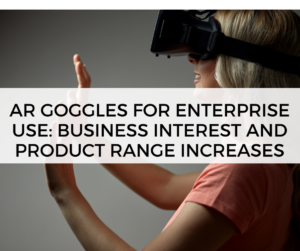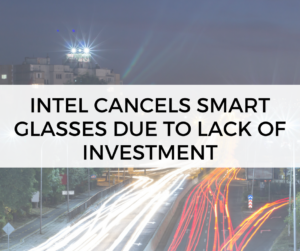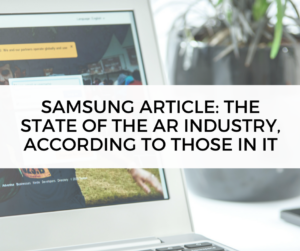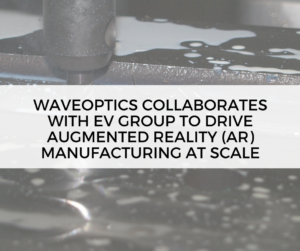5 Challenges that Providers of Smart Glasses Must Overcome
In the near future, light, unobtrusive smart glasses will reliably support deskless work and make technicians more efficient in their tasks. The last few years have seen increased investment in smart glasses technology, with a number of high-profile acquisitions and direct investments by large companies in manufacturers and start-ups, but some challenges still remain.
As seen in this this article by Jay Kim of AREA member APX Labs, form factors, capabilities and price are all continually evolving for the better. This post highlights the five challenges that providers face before their smart glasses are widespread in enterprise. Various providers are solving these problems on their own as industry-wide best practices for how to address these challenges have yet to be developed.
Components Are Pushing the Boundaries
Processors for Augmented Reality-enabling tasks are steadily improving, but matching required capabilities for enterprise with optimal form factors is still a challenge. For example, graphics processors must be small, lightweight and highly power efficient in order to be placed within eyewear frames that remain comfortable to wear. Accelerating real world tracking and fluid rendering of virtual objects requires chips like NVIDIA Tegra X1 or Intel m7, which are just now showing up in the latest high-end smart glasses from companies like Atheer and DAQRI. Combined with eye-tracking capabilities, reliable voice and gesture recognition, these computational requirements add up, both in terms of battery consumption and heat production, which need to be properly and efficiently managed.
A high-resolution front-facing camera is necessary for creating Augmented Reality experiences but not all smart glasses have that functionality. Tilting and shaking also present challenges for both AR experience delivery and video conferencing.
Other areas of improvement remain to be made in battery life, similar to what is happening in the smartphone space. New models specifically designed to industrial specifications are coming to market this year but have yet to be extensively tested in real world settings.
Network Security and Bandwidth
Continuously providing Augmented Reality experiences based on cloud-hosted services and content requires uninterrupted bandwidth and coverage wherever employees with AR devices work. Ensuring reliable WiFi availability in cramped areas of a ship’s steel-plated hull, for example, is a daunting challenge, and we are starting to see more and more solutions adopting robust offline functionality and local storage to fill in the gap.
Both devices and networks may require high security standards in sensitive environments to ensure proprietary information is not misplaced. The shortcomings in security are the same as those faced by existing wearables and smart devices in the market today.
Content for Augmented Reality Experiences
As when content was being produced 25 years ago for the brand new World Wide Web, commonly accepted paradigms for the design of AR experiences to be delivered to smart glasses are non-existent. Authors of AR experiences must experiment and develop their own techniques for ensuring usability of user interfaces and safety.
As with the World Wide Web, standards for user interface design and content first require a greater proliferation of Augmented Reality usage on smart glasses, producing a chicken and egg phenomenon: with poor user experiences, usage remains low. With low demand, experimentation with new designs is slow.
Content for use in Augmented Reality experiences for smart glasses, such as images and 3D models, tends to be authored from scratch. Those companies that have made prior investments in CAD authoring tools have an advantage when they can access and convert existing, industrial CAD models into lightweight, polygonised versions for display in smart glasses. Successful authoring of AR content also requires heavily customized authoring toolchains and workflows and a uniform look and feel for displayed content that is emotive, highly relevant and takes into account safety requirements. 2015 saw a proliferation of providers creating smart-glasses-first content and applications to fully leverage the smart glasses platforms.
Some initiatives such as the OASIS Augmented Reality in Information Products technical committee and the IEEE AR Learning Experience Model (ARLEM) have been formed to address such challenges.
Overall User Experience
In addition to user experience for the human-machine interface, other UX factors for smart glasses are still improving. Cables are frequently required to connect a hands-free display to the networking or content processing hub, or to the battery pack. While these form factors solve many problems such as battery life and device weight, they still leave many yearning for an all-in-one device.
How to best interact naturally with the displayed content is something all manufacturers are trying to solve. The most sophisticated smart glasses are doing away with physical controls altogether in favor of voice, head motion, and gesture interaction. Bulkiness and limited field of view are other complaints that were prominent in the early days of smart glasses, but competition in this space has driven manufacturers to improve vastly on both of those. Narrow Field of View (FOV) limits the amount of information that can be displayed to the user, and the best smart glasses models are now delivering immersive display experiences that address those concerns.
Safety, Privacy and Regulations
Smart glasses present a number of new and unresolved safety challenges. Their sheer novelty also means that few regulations specifically targeting them have been developed.
As seen from this presentation by attorney Brian Wassom, although new regulatory regimes for smart glasses are required, none currently exist. Future conversations about the safety of head-mounted displays in environments such as the enterprise and industrial settings still need to take place.
Some challenges such as obstructed peripheral vision, for example, can pose a safety hazard when the wearer is in motion or in an industrial workspace. Adapting the amount and relevance of information displayed to the user is key to making the wearer safer on the job.
Conclusion
As with other types of wearables, smart glasses represent a novel technology whose development and usage are still evolving. Both business and technological challenges are in the process of being addressed so that smart glasses are generally accepted as routine work tools and become more recognized for their productivity-enhancing features.
Despite these challenges, several smart glasses deployments for enterprise use were announced in 2015 and some predict that 2016 will bring many more deployments as companies look to gain an edge on the competition.
What are your key challenges with smart glasses? Is your organization or smart glasses provider addressing any of these challenges already? Share with us your views in comments below.








